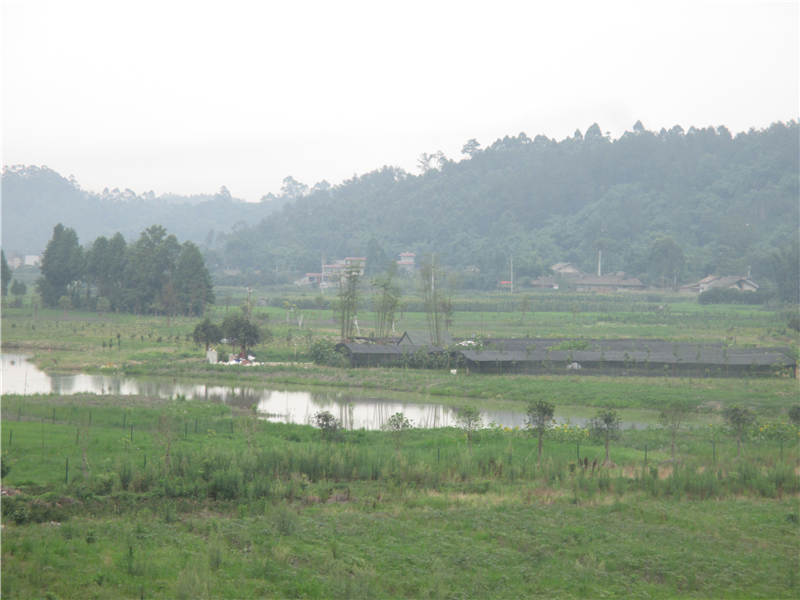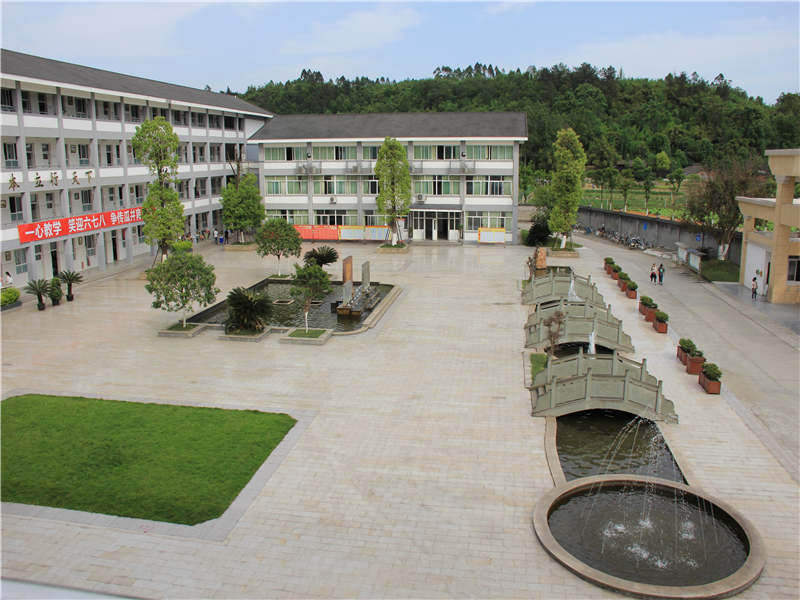The First Original Writing Competition
Senior High School Group
Platinum Award
Written by
Tu Haosen, Pingle High School, Sichuan Province, China
Date: Oct, 2016
The smattering of old trees in the distance sway wildly under a bitingly cold winter wind. Birds, leery of taking rest in their branches, scatter in flight. Only a few remain, squawking in the pale sky illuminated by an ashen sun.
I returned home in the middle of winter, at the cusp of a new year. My remote village sits at the base of a mountain with the handful of extremely ordinary-looking houses, including my own, occupying the few plots of usable land. The thin spires of smoke emerging from home-stoked fires don’t rise far before they are dispersed in the wintery gale. Winter emaciates all. It seems as if its chill could even overwhelm the feeble rays of the afternoon sun.
Lit by ashen sunlight and enveloped in wind, I sat one day in our courtyard reading a book in a bamboo chair. After a while, I closed the book and walked up the stone-slab steps. A mysterious, hollowed-out stone carving suddenly caught my eye beneath the wood-framed windowsill set into the neatly kempt old brick wall, blackened with age and coated in velvety moss. 
This unexpected discovery piqued my curiosity and I moved in for a closer look. The age-blackened stone slab had a circular artistic motif, with two fine circles bordering the outer edge and a delicate design carved into the middle, cut through to the back, creating a curious swastika symbol. The stone had been fully cut away on all four sides, leaving an opening into the pitch-black emptiness that lay underneath. This carved design was simple, yet intriguingly alluring. While so unassuming, it shone with unburnished, inner beauty that effused an almost spiritual allure. I realized suddenly that this was the first time in over a dozen years of walking past that I had taken particular note of this piece. A chilling gust once again shook the branches of the trees around me, sending them aquiver and releasing yet another cluster of desiccated, dead leaves to the mercy of capricious winds. They too were soon consumed by the surrounding sky.

After loitering a while longer, I picked myself up and turned … startled to see my father’s smiling face staring silently at me. I have no idea how long he had been standing behind me. He came to my side, knelt down and examined the moss-enveloped stonework. After a long silence, the wind once again voiced a doleful ‘sigh’. I crouched down by my father’s side and, pointing at the motif, asked, “Dad, what is that?” He answered, “This is what we in western Sichuan call a ‘lou yin’. Back in the day, this was something of no small importance.” Then, a cloud of frustration seemed to cross his face as he ended with a glum, “But … well …” I’d never heard of such a thing, I thought. I pressed him further, asking, “What’s a ‘lou yin’ and why haven’t I heard of it before?” Dad stood up slowly and with a renewed air of seriousness replied, “Lou yin were once something very important here. Nearly every home had one. Our humid climate, rainy weather, and low elevation led our forebears to invent an ingenious system for channeling water away from homes that kept floors from becoming damp and muddy and kept home interiors dry, and the people inside from falling ill. Stone slabs with holes cut all the way through were set into the foundations of houses at ground level just below the main floor. In this way, any water that collected on the floor would flow naturally downward through these lou yin and away from the house, leaving the stonework and indoor air comfortably dry. The many different designs that were used in lou yin made them both practical and pretty. Our lou yin are carved with Buddhist swastikas – a symbol of good luck, good fortune, and perfection. It’s a shame that the craftsmanship needed to make these lou yin is disappearing. They’ve been replaced with other waterproofing materials. Anyway, almost nobody is building homes of stone these days. It’s truly a shame …”

The sun had long slipped behind a heavy curtain of clouds, leaving the day tucked in a blanket of sullen grey.
A sour feeling crept across my mind. What I’d been looking at was a work of ancient, masterful craftsmanship! This wasn’t just some piece of art drilled in stone, it was a structural element designed to set flagstones off the ground. The excavated holes, the placement of the stones, and their size all reflected ancient craftsmanship and skill! Moreover, lou yin were beautiful to look at. Most casual observers see only a simple design and are oblivious to the lou yin‘s greater purpose. As society advances, we are gradually losing traditional crafts such as this. If these ancient skills are ultimately truly lost to history, the cost of this loss must surely be incalculable. But, preserving these skills so that they will be accepted and accommodated by modern society requires innovation.
However, innovation must not happen in a vacuum. It cannot be led or accomplished subjectively. Truly meaningful innovation must be built on the foundations of traditional craftsmanship and properly directed. So, what is innovation and what is tradition?
Tradition is Galileo observing stars in the night sky; it is also the lifetime spent by Tycho Brahe observing the logic of how the heavens moved across the sky. Innovation is Newton standing on the shoulders of these giants before him, benefitting and consolidating their great works into his groundbreaking, unbreakable set of natural laws. Tradition is the fanciful theories of Saint Simon and Charles Fourier, while innovation is the ruminations of Karl Marx in the British Museum, which he poured into his life’s work and masterpiece Das Kapital.
I am unwilling to see these gems of ancient wisdom lost to history or shuffled off to society’s dark, unvisited corners. Moreover, I will actively work to see that they do not suffer such a fate. However, innovation will absolutely be necessary if they are to be integrated successfully into our modern age. The ancient magnetic spoon compass first evolved into the compass and then into today’s GPS and smart navigation systems. Zhang Heng’s seismoscope is the ancient predecessor of modern earthquake detection instruments. The creations of our ancestors reflect deep wisdom and intelligence. The board game ‘go’ teaches strategy and rules applicable to everyday life. Ink put to paper opens a window onto innumerable lives and situations. Tradition is not the single-minded preservation of the old; innovation is not the casual jettisoning of the status quo. I truly believe that tweaking the traditional with innovation will let time-honored traditions shine anew! I sincerely hope that the lou yin may once again find a place in modern architectural designs instead of being relegated to studies of historical architectural techniques.
For now, I am able to give only a silent sigh, both for these endangered traditions and for ourselves.
But, I have faith that the sun will one day break from its cloud-enveloped shroud and reveal its brilliant glow once again.
Yes, that day will certainly come, and it won’t be long.
Reviewer Comments
The author naturally and candidly weaves into the narrative his genuine sensorial experience. The material is unique and the author approaches it well. The topic and proposition are good.
